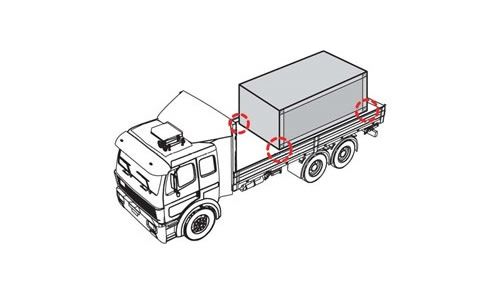Review Questions - Click On The Picture To Begin...

When securing an intermodal container on a chassis, what is the maximum allowable vertical travel when secured?
- 1/2 inch
- 1 inch
- 2 1/2 inches
- 2 inches
Quote From The CDL Manual:
Securing devices must restrain the container from moving more than:
- 1.27 cm (1/2 in) forward.
- 1.27 cm (1/2 in) rearward.
- 1.27 cm (1/2 in) to the right.
- 1.27 cm (1/2 in) to the left.
- 2.54 cm (1 in) vertically.
Next
What is the minimum WLL required of tiedowns securing loaded intermodal containers on non-chassis vehicles?
- It depends on the length of the container.
- 20% of the loaded weight of the container.
- 50% of the loaded weight of the container.
- 80% of the loaded weight of the container.
Quote From The CDL Manual:
Secure each container to the vehicle by:
- Either chains, wire ropes, or integral devices that are fixed to all lower corners.
- Or crossed chains that are fixed to all upper corners.
- Or both.
Secure the front and rear of the loaded container independently.
Secure the four corners using tiedowns that are attached to the loaded container.
The tiedowns must have an aggregate working load limit of at least 50% of the loaded weight of the loaded container.
Attach each chain, wire rope, or integral locking device to the container in a manner that prevents it from becoming unfastened while in transit.
Prev
Next
How many anchor points should be used to secure an intermodal container on a chassis vehicle?
- 2 latches in the front and 2 in the middle.
- 2 latches in the middle, and 2 at the rear.
- 4 latches total, anywhere on the trailer.
- 2 latches each at or near both the front and rear.
Quote From The CDL Manual:
Secure the front and rear of the container independently.
- 2 latches on the chassis engage anchor points towards or at the front of the container.
- 2 latches on the chassis engage anchor points towards or at the rear of the container.
Prev
Finish
Please select an option









 TT On Facebook
TT On Facebook